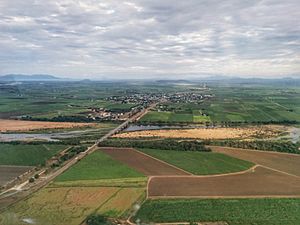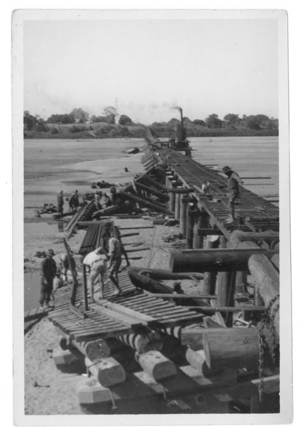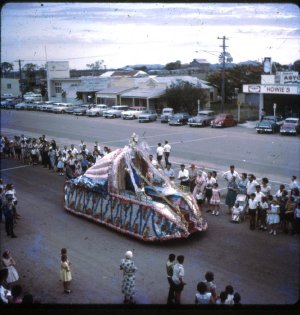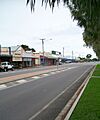Home Hill, Queensland facts for kids
Quick facts for kids Home HillQueensland |
|||||||||||||||
|---|---|---|---|---|---|---|---|---|---|---|---|---|---|---|---|
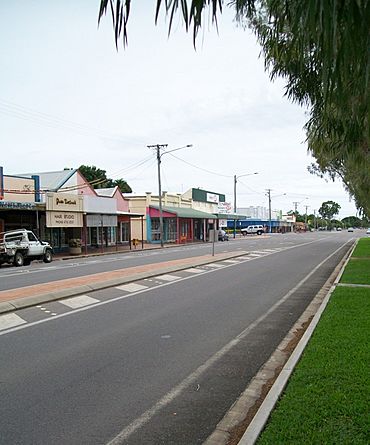
View of Home Hill's main street, along the Bruce Highway
|
|||||||||||||||
| Population | 2,876 (2021 census) | ||||||||||||||
| • Density | 142.4/km2 (369/sq mi) | ||||||||||||||
| Established | 1912 | ||||||||||||||
| Postcode(s) | 4806 | ||||||||||||||
| Area | 20.2 km2 (7.8 sq mi) | ||||||||||||||
| Time zone | AEST (UTC+10:00) | ||||||||||||||
| Location |
|
||||||||||||||
| LGA(s) | Shire of Burdekin | ||||||||||||||
| State electorate(s) | Burdekin | ||||||||||||||
| Federal Division(s) | Dawson | ||||||||||||||
|
|||||||||||||||
Home Hill is a country town and area in Queensland, Australia. It is part of the Shire of Burdekin. In 2021, about 2,876 people lived in Home Hill.
The town is located near the Burdekin River, where the river splits into many smaller channels before reaching the sea. This area is great for growing sugarcane because there's plenty of underground water to help the crops grow.
Badilla is a small area or neighbourhood in the southern part of Home Hill.
Contents
Discover Home Hill's Location
Home Hill is about 98 kilometres (61 miles) south of Townsville and 1,269 kilometres (789 miles) north of Brisbane, the state capital. It sits along the Bruce Highway, a major road in Queensland. Home Hill is part of the Burdekin Region, which also includes the nearby town of Ayr. Both towns are managed by the Burdekin Shire Council.
The Burdekin River forms the north-western edge of the Home Hill area. The main town is in the middle of the area, surrounded by farms. The Bruce Highway goes through the town and crosses the river using the famous Burdekin Bridge to get to Ayr. The North Coast railway line runs right next to the highway, and the Home Hill railway station is in the town centre. This railway line also crosses the river on the Burdekin Bridge. Even though it's called "Home Hill," the land here is very flat!
Home Hill's Interesting Past
Home Hill was once part of a large cattle farm called Inkerman Downs. In 1910, the Queensland Government divided this land into smaller farms. Even though Ayr was close, there was no bridge over the Burdekin River. So, a new town was needed to support the farmers. The first land lots for the town were sold in December 1912, and it was named Home Hill.
How Home Hill Got Its Name
The name Home Hill has a few different stories! Some say it was named after a hilltop called Home Hill, which was defended by the British Army in a battle during the Crimean War. Others believe it was named after Colonel Home, who lived in the area and also fought in that war. There's even a story that the original name was Holme Hill and it later changed to Home Hill. Early newspapers sometimes called it Holme Hill. It's funny because the "Hill" part of the name doesn't make sense for the local area, which is very flat!
Early Days and Development
The Home Hill Post Office opened in 1913. A tent school started in 1913 and later became the Home Hill State School in 1914.
In 1913, a low-level railway bridge was built across the river, connecting Ayr, Home Hill, and Bowen. A road bridge was added in 1923. However, the Burdekin River often flooded, damaging these bridges and making them unusable. For many years, people thought it was impossible to build a high bridge because the ground was too sandy. But by using special building methods from India, work began on the Burdekin Bridge in 1947. It finally opened in 1957. At 1,097 metres (3,600 feet) long, the Burdekin Bridge is one of Australia's longest multi-span bridges and is unique because it doesn't have a firm rock foundation.
The town grew quickly after the Inkerman sugar mill was built in 1914, as more farmers started growing sugarcane. In 1922, Home Hill got electricity for the first time when a power station was built. The first courthouse opened in 1923.
Home Hill's Newspaper and Community Events
Home Hill had its own newspaper, the Home Hill Observer, which started in 1923. It was run by the Jackson family for many years until it stopped printing in 2014.
The Home Hill Agricultural, Horticultural and Industrial Society held its first show in 1926. These shows, which featured farming, gardening, and local industries, happened every year (except during World War II) until 2001.
In 1959, Cyclone Connie hit Home Hill, causing damage to almost every building and leaving many people without homes.
The first Home Hill Harvest Festival was held in 1963. This festival still happens every November to celebrate the end of the sugarcane harvesting season.
Home Hill State High School opened its doors in 1964.
Farming Changes and Modern Services
In the 1960s, some farmers tried growing rice, and a rice mill opened in 1968. However, the rice industry in Queensland faced problems, and it ended in Home Hill by 1994. But farmers found success with other crops like mangoes, cucumbers, tomatoes, chillies, and cotton.
Home Hill got town water from a water tower in 1968, and a sewerage system was installed between 1976 and 1979. Before this, most homes used windmills or electric pumps to get water from underground.
In the mid-1980s, sugarcane farming became harder due to rising costs and falling prices. Farmers had to use more machines to save money, which meant farms needed to be larger to be profitable. This led to many smaller farms closing down.
When the railway station closed in 2003, its buildings were repurposed. They now serve as a tourist information office and a community bank.
Home Hill Today: Population and Economy
In 2021, the population of Home Hill was 2,876 people.
The town's economy mainly depends on its farms. The most important crop is sugarcane. Other important crops include mangoes and various vegetables. The Inkerman Sugar Mill is a key part of the local economy, located in the northern part of Home Hill.
Important Places and Buildings
Home Hill has several buildings that are listed as important heritage sites, including:
- The Home Hill Powerhouse
- The Greek Orthodox Church
- The Old Home Hill Court House
- The Doctor's Surgery
- The Malpass Hotel
- No. 211 Radar Station (RAAF) at Charlies Hill
Education in Home Hill
Home Hill has several schools for different age groups:
- Home Hill State School is a government primary school for students from Prep to Year 6.
- St Colman's School is a Catholic primary school for students from Prep to Year 6.
- Home Hill State High School is a government secondary school for students from Year 7 to Year 12. It also has a special education program.
- The Burdekin campus of TAFE Queensland offers technical training for older students.
Community Facilities and Services
Home Hill has many important services for its residents:
- Home Hill Police Station
- Home Hill SES Facility (for State Emergency Service)
- Home Hill Health Service is a public hospital that mainly provides care for older people.
- Home Hill Fire Station and Home Hill Ambulance Station
- Home Hill Aged Hostel is a nursing home.
- Home Hill Cemetery
- Home Hill Wastewater Treatment Plant handles the town's sewage.
Fun Things to Do and See
The Burdekin Memorial Hall is a community centre where many events take place. It has a large hall, a smaller hall, and a meeting room. The Home Hill public library is also located here.
Even though it's called the Home Hill Golf Club, it's actually located in the nearby area of Fredericksfield. It's a 9-hole golf course.
Churches in Home Hill
Home Hill has several churches:
- St Colman's Catholic Church
- St Helen's Anglican Church
- Burdekin Uniting Church
- St Stephen's Greek Orthodox Church
- Burdekin Apostolic Church
- Home Hill Seventh-day Adventist Church
Events and Attractions
The Home Hill Harvest Festival is a big annual event in November. It's a week-long celebration that ends with a street parade and a fun Mardi Gras.
The Burdekin Race Club also holds regular horse race days in Home Hill.
The main attractions in Home Hill are the impressive Burdekin Bridge and the Inkerman Sugar Mill. In recent years, Home Hill has become a popular spot for backpackers who come to work on the farms, planting and harvesting crops.
Famous People from Home Hill
Some notable people who have lived in or are from Home Hill include:
- Anne Geddes, a famous photographer
- Gordon Hookey, an artist
- Rosemary Menkens, a politician
- Donald Nicklin, a chemical engineer and professor
- Craig Wallace, a politician
Images for kids
See also
 In Spanish: Home Hill para niños
In Spanish: Home Hill para niños



